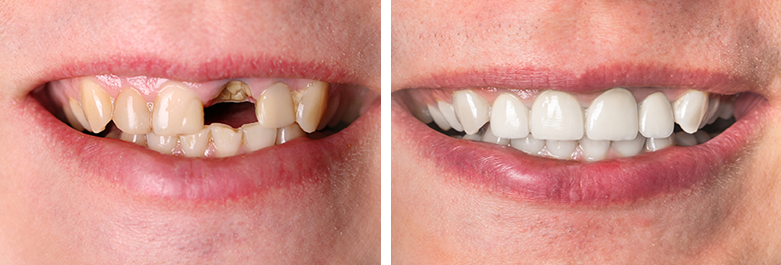Root Canal
SERVICE OVERVIEW

The aim of root canal treatment (also called endodontic treatment) is to save a tooth that has been badly damaged due to decay, disease or injury. Many millions of teeth each year are saved from extraction by having root canal treatment.
Your own teeth are better than artificial teeth because:
- They are more efficient for biting and chewing
- They are stronger
It is better to have a tooth in place because teeth can move out of their normal position and tilt into the space left by a missing tooth. This can make chewing and biting difficult, and can lead to further decay and gum disease around the tilted teeth.
What happens during root canal treatment?
To improve the chances of success, root canal treatment should start as soon as possible after a problem is identified. A hole is drilled through the top of the tooth to access the root canal. The infected pulp is removed and the space is disinfected. The canal is then shaped with fine dental files, washed with a sterilising solution and sealed with a final filling. This treatment can take several visits to complete. If there is an infection present, antibiotics are sometimes prescribed.
How successful is root canal treatment?
As with all dental and medical treatments, root canal treatment has risks. Because the root canals are very fine and curved in some teeth it may be difficult to clean the canals completely, and your clinician cannot guarantee that it will be successful. Success may depend on a patient’s general health, age, capacity to heal, and many other factors.
The final restoration of the tooth is very important. If the tooth is not properly restored, bacteria can re-enter the tooth and cause another infection. A crown is recommended to strengthen and seal the tooth properly. Infection in the damaged tooth is likely to heal completely once treatment is undertaken. The risks of reinfection are low, but if infection recurs the tooth may have to be treated again or removed. In some people, the treated tooth may lose its original whiteness and become darker. If a front tooth is affected discolouration can be treated by bleaching, or an artificial crown or veneer can be fitted.
Pain or infection may occur months or years after a tooth has been treated. This is usually due to further deep decay, trauma or a cracked filling which allows bacteria to enter the tooth and cause infection. More endodontic treatment may be needed to save the tooth.
